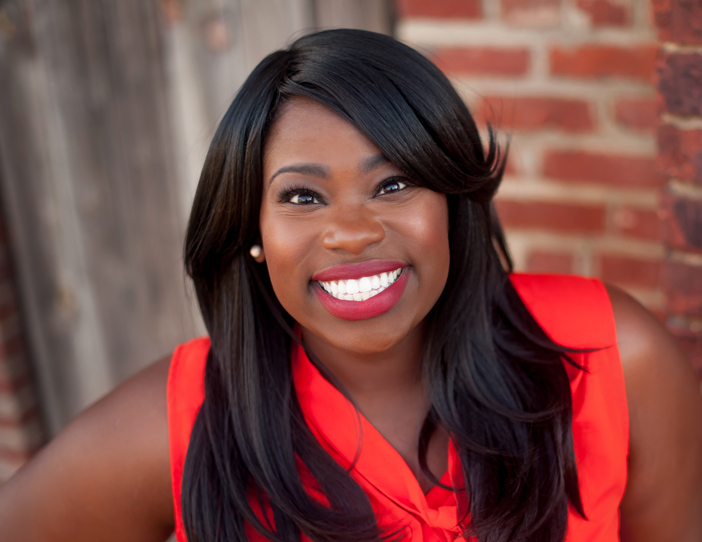
Episode Description
If you have an important, high-stakes presentation that needs to move people en masse in a given direction, Nancy Duarte is the person you’d call.
She’s the expert. She’s written, visualized, and helped people deliver some of the world’s greatest talks. Her Guide to Persuasive Presentations is the best-selling Harvard Business Review guide ever. And if you haven’t seen Nancy’s TED talk — where she lays Martin Luther King’s I Have a Dream speech over Steve Jobs’ Apple iPhone release and shows you how they’re essentially the same talk — then I don’t know where you’ve been in the last six years.
Last week, J.J. and I walked you through the StoryBrand 7-Part Framework when we were launching my new book. One of the most pivotal elements of the framework is to recognize you’re not the hero of your brand’s story — your customer is. Nancy gets the credit for that too.
So I can’t tell you enough how honored I am to have Nancy as our guest on this week’s episode of Building a StoryBrand podcast. Nancy gives us the tools we need to make our presentation resonate. She’s going to show us how to carefully examine and craft seven different sections of our presentation before stepping up on stage.
As business leaders, you’re giving presentations whether it’s opening up a team meeting, rebranding after a company merger, or breaking the news about layoffs. When you follow Nancy’s advice, you’ll win the crowd over, wow them with your big idea, and crush that presentation.
This is just a quick summary of Nancy’s wisdom. You’ll want to listen to the entire episode sometime this week to get the full impact of all she has to share.
Audience
When you’re preparing to present, your mind starts racing about your performance — what you’re going to say, which information you should gather, and how you’re going to deliver to your audience.
But Nancy says, “Stop.”
Before you start figuring out the content of your presentation, figure out what your audience is thinking and feeling first.
Before you start figuring out the content of your presentation, figure out what your audience is thinking and feeling first. Realize what they are experiencing. Recognize what your presentation is going to ask them to do.
Think about the uncomfortable parts of your presentation.
Are you going to ask them …
- • To work longer?
- • Take a pay cut?
- • Reframe layoffs?
- • Recognize they’ve been doing it all wrong?
Nancy says you need to ask yourself, “How are they going to process this, and how do I comfort or encourage them in the process?”
When you take some time to understand the uncomfortable things you’re asking of your audience, you’ll tap into the empathy you need to really connect with your audience.
Message
If you think now is the time to start outlining the topic of your presentation, you’re wrong.
As business leaders, you’re good at structure because you’re organized. You can be counted on to give three points about everything. But sometimes those three points aren’t really going to make a powerful impact. Before diving into structuring the content, Nancy challenges you to start with the big idea.
You’re leading your audience on a journey.
To do that, understand you’re leading your audience on a journey. Ask yourself questions like:
Where am I moving this audience from? Where am I moving them to? What is their transformation going to be? How do I arrange all the information to support that transformation?
By fully focusing on the big idea of transformation, you’ll develop a message that will resonate with your audience.
Story
Now is the time to focus on structure.
“A story has a three-act structure with a likeable character who encounters roadblocks and is changed by them,” Nancy says.
You should apply this story framework to your presentation, placing your audience as the likeable hero who will undergo this transformation.
- Craft the beginning. Establish what is the status quo and paint a picture of what could be. The larger the gap between these two situations the better.
- Develop the middle. Build tension between what is and what could be by addressing the roadblocks and helping your audience overcome them. During the middle of the speech, powerful orators lead their audience through a series of tension and release.
- Establish a powerful ending. Describe the new bliss of your audience with their problems solved or a utopian world without these problems. Dave Ramsey is a master at this. At the end of his Financial Peace University class, he leads his audience to imagine what being debt-free feels like.
By leading your audience through this three-part structure, you’ll guide them through their transformation in a powerful way.
Media
Now that you’ve understood what it feels like to be in your audience and you’ve developed a message that caters to them, choose the right vehicle for your message.
“It doesn’t necessarily mean slides,” Nancy points out. “It could mean a prop. It could mean the physicality of what you’re doing.”
One of the things you shouldn’t do is show up at a media conference with a flip chart and marker. I did that once and I bombed the presentation. Another bad idea would be to play band music at a layoff announcement. I haven’t done that but I’m sure it would bomb too.
All aspects of your presentation should support your message.
The point is all aspects of your presentation should support your message. Some things to consider are lighting, music and the environment.
Nancy gives an example of a man who helped people with addictions. As he shared his own story of addiction, the lighting moved through the 24 hour light cycle of the day. By the time he was at the darkest time in his soul, the whole room was black. It was very powerful.
Reach your audience in nuanced ways by thinking beyond the content of your slides.
Slides
Nancy and her team came up with the term “glance media” to describe effective slides in a presentation. Your audience should be able to glance at your slide, process it for three seconds, and then focus back on your verbal stream.
Your audience should be able to glance at your slide, process it for three seconds, and then focus back on your verbal stream.
If your slides are really intense and dense, you’ll lose your audience on the journey.
Also, choose the right type of slide. Should you reveal a bullet, conceptual, or data slide? Don’t forget about other possibilities like images and videos.
Or opt for black. If you’re giving a point and you want the audience to focus on what you’re saying, move to the next slide and cover it.
Visuals should convey meaning. If you consider carefully how to do that, you’ll communicate your message powerfully.
Delivery
After content and slides, delivery is the third part to really killing your presentation.
Nancy outlines a few important qualities you need for an unforgettable delivery:
- Be Empathetic. Deliver your presentation authentically. To do that, you need to feel for your audience and communicate a sense of purpose and passion for your message.
- Be Dynamic. Consider your voice. Should you lower it? Or raise it? What about your body language? Perhaps you should walk a few steps forward and lean toward your audience to emphasize a point. Or step back and wait in silence.
- Be Comfortable. It’s important to be comfortable with yourself and with your content. Rehearse your material well.
Anticipate technology glitches because they often happen.
When you pay attention to the details of your delivery, you make a powerful impression on your audience that will last long after the final slide is shown.
Impact
I think I really nailed a presentation if I get a standing ovation. You might feel great if you get 400 tweets during your talk. Nancy considers it a win if the Twitterverse goes dead silent during her talk and explodes after.
“That means they forgot they ever were holding a medium in their hand,” she says.
Whatever your measure of a success, it’s important to know what it is and gauge whether you achieved it after a talk.
It’s also important to recognize that killing a presentation isn’t enough. You want people interacting with your message after you mic drop and walk off the stage.
It’s also important to recognize that killing a presentation isn’t enough. You want people interacting with your message after you mic drop and walk off the stage.
To do that you need to build relationships and spread your ideas through social media. Or connect more deeply with the people in the room by directing them to your website where you have other ways of interacting.
Nancy says you should help your audience grab your big idea and run with it on their own. If you do that, your message will keep growing after the last slide has been played.
__
By carefully preparing and analyzing these seven areas of your presentation, you can become someone who gives amazing talks. When you succeed, you’ll move your audience with your big idea and help them transform.

LAST CHANCE TO GET TWO FREE BONUSES
Don’t cut your profit short.
You’ve gathered a lot of valuable information by reading, but there’s so much more! Buy the little book that makes marketing easy. If you act now, you’ll get two amazing bonuses:
The Secret to How Customers Think (Audio Lecture, $49 Value)
Why Customers Really Buy (Video Lesson, $99 Value)
Getting the bonus content is really easy!
Simply (a) purchase the book from any retailer and (b) forward your receipt to bonus@StoryBrand.com.










